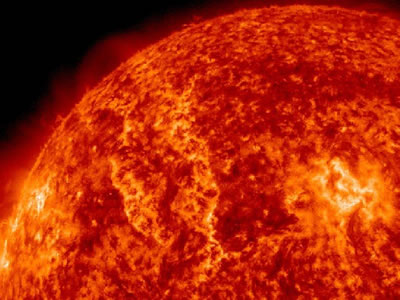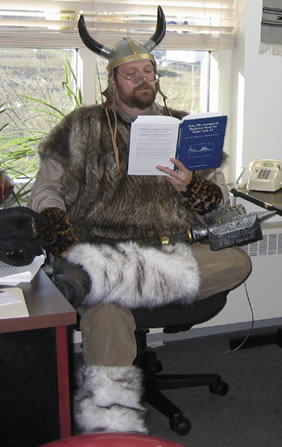About the topic
Bio
Get the Flyer (pdf)
About the topic
 The output of our Sun is constantly changing. Solar flares, coronal mass ejections, sunspots, solar wind all affect the environment of charged particles, magnetic fields, and photons in which our Earth exists. With our increasing reliance upon space-based technology, we've become vulnerable to changes in solar activity. NASA and NOAA are actively researching and monitoring the output of the Sun in order to understand and predict space weather. I will talk about our vulnerabilities to space weather and about how solar instruments built by the University of Colorado's Laboratory for Atmospheric and Space Physics (LASP) for NASA's Solar Dynamics Observatory (SDO) and NOAA's next generation of GOES satellites fit into the space weather picture.
The output of our Sun is constantly changing. Solar flares, coronal mass ejections, sunspots, solar wind all affect the environment of charged particles, magnetic fields, and photons in which our Earth exists. With our increasing reliance upon space-based technology, we've become vulnerable to changes in solar activity. NASA and NOAA are actively researching and monitoring the output of the Sun in order to understand and predict space weather. I will talk about our vulnerabilities to space weather and about how solar instruments built by the University of Colorado's Laboratory for Atmospheric and Space Physics (LASP) for NASA's Solar Dynamics Observatory (SDO) and NOAA's next generation of GOES satellites fit into the space weather picture.
Here are some fascinating websites, with many instructive or just plain amazing photos and diagrams:
NASA Solar Dynamics Observatory (SDO) page.
NCAR Windows to the Universe - Sun Tour.
NOAA Space Weather Primer. A good site to begin with.
Bio
 Dr. Frank Eparvier is a Senior Research Scientist at the University of Colorado's Laboratory for Atmospheric and Space Physics in Boulder. He has a B.S. degree in Physics and Mathematics from the University of Wisconsin (1985) and a Ph.D. in Astrophysical, Planetary, and Atmospheric Sciences from the University of Colorado (1991). He in principal investigator on the EUV (extreme ultraviolet) and X-Ray Irradiance Sensors (EXIS) on the NOAA GOES-R satellite series, instrument and project scientist on the EUV Variability Experiment (EVE) on the NASA Solar Dynamics Observatory (SDO), instrument lead on the EUV monitor on the NASA MAVEN mission to Mars, and instrument scientist on the Solar EUV Experiment (SEE) on the NASA TIMED mission. His research interests are in the areas of solar irradiance variability and its effects on the upper atmospheres of the Earth and other planets.
Dr. Frank Eparvier is a Senior Research Scientist at the University of Colorado's Laboratory for Atmospheric and Space Physics in Boulder. He has a B.S. degree in Physics and Mathematics from the University of Wisconsin (1985) and a Ph.D. in Astrophysical, Planetary, and Atmospheric Sciences from the University of Colorado (1991). He in principal investigator on the EUV (extreme ultraviolet) and X-Ray Irradiance Sensors (EXIS) on the NOAA GOES-R satellite series, instrument and project scientist on the EUV Variability Experiment (EVE) on the NASA Solar Dynamics Observatory (SDO), instrument lead on the EUV monitor on the NASA MAVEN mission to Mars, and instrument scientist on the Solar EUV Experiment (SEE) on the NASA TIMED mission. His research interests are in the areas of solar irradiance variability and its effects on the upper atmospheres of the Earth and other planets.
We also had a photo of Dr. Eparvier eating a small child, but opted for this more thoughtful study.
